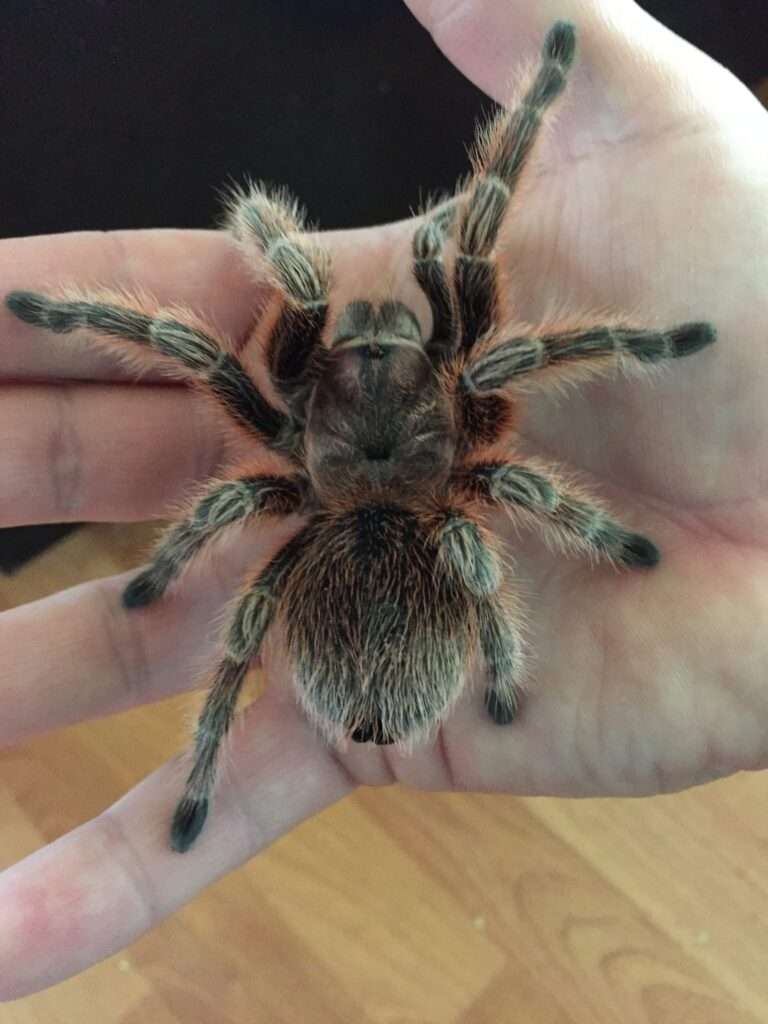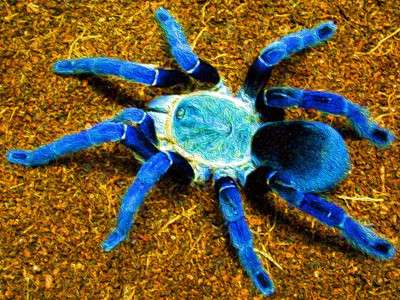
Due to the abundance of cheaply exported wild-caught specimens from their native Chile into the pet trade, the Chilean rose tarantula (Grammostola rosea), also known as the rose hair tarantula, the Chilean fire tarantula, or the Chilean red-haired tarantula (depending on the color morph), is likely the most prevalent species of tarantula available in American and European pet stores today. Argentina and Bolivia are also known locations for the species.
Tarantula hobbyists frequently keep G. rosea as a pet. Females have been reported to survive up to 20 years, but given the short amount of time they have been on the market (and hence subject to substantial research), they may live significantly longer. There is considerable overlap between this species and Grammostola porteri, and some claim that many “G. rosea” specimens sold as pets are actually G. porteri.
Diet
Grasshoppers, crickets, moths, beetles, cockroaches, mealworms, tiny reptiles, and mammals are among the varied foods consumed by this tarantula. Crickets that have been gut-loaded on vegetables are the best food that can be given to tarantulas when they are maintained as pets since they are the best source of hydrated nutrition for tarantulas.
Distribution
The desert and scrub ecosystems of Chile, Argentina, and Bolivia are home to the Chilean rose tarantula.
Habitat
The Chilean rose tarantula either excavates burrows in the ground or locates abandoned rodent burrows that they line with their own silk. The tunnels usually have one or two chambers and are vertical. While female burrows are less covered but deeper, reaching a depth of 40 cm, male burrows typically have them covered in more vegetation or under stones.
Description of the body
Upper Body
The upper body is made of a hard shell and is generally colored from brown to black with rose-hued hair. Because tarantulas’ fangs fold under their bodies, they must impale food from below.
Legs
Four pairs of legs make up a tarantula’s eight legs.
Chelicerae and Pedipalps
They also have four additional chelicerae and pedipalps near their mouths. The pedipalps are utilized as feelers and claws, and the chelicerae have fangs and venom. Both help with feeding. The male uses the pedipalps in the process of reproduction as well.

Size
A medium-sized terrestrial spider, the Chilean rose tarantula has females with an average leg span of five inches (12-13 centimeters). Males often measure closer to 3.5 inches (9 cm) than females, but male legs are proportionately longer.
Defending Techniques
A poisonous spider is called Grammostola rosea. However, the urticating hairs on its belly are its primary line of defense against predators. When the spider feels threatened, it will brush these hairs off its back with its leg, releasing them. When the urticating’s hairs come into touch with the predator’s skin or eyes, they itch and irritate them. The urticating’s hairs serve as sensory organs as well, aiding the spider in detecting minute vibrations or pressure changes. The Chilean Rose Tarantula’s venom, which is injected into its predator by its fangs, is its next line of defense.
The venom contains hemotoxins, which disturb the circulatory system, and neurotoxins, which damage the nervous system, albeit it is not particularly deadly to humans. Due to the presence of enzymes that transform prey into fluid that can be consumed, venom is mostly used for hunting.
Pet
Grammostola rosea is a common pet maintained in terrariums because it is affordable, low-maintenance, and relatively docile. G. rosea can be maintained with a low relative humidity. They can be kept at 77–86 °F (25–30 °C) temperatures and fed crickets or locusts. The spider can go without food for weeks or even months at a time. Sometimes, fasting is a sign of an impending ecdysis (molt).
Ecosystem Function
Regarded as a crucial tool for getting rid of pests that consume crops.
Table





